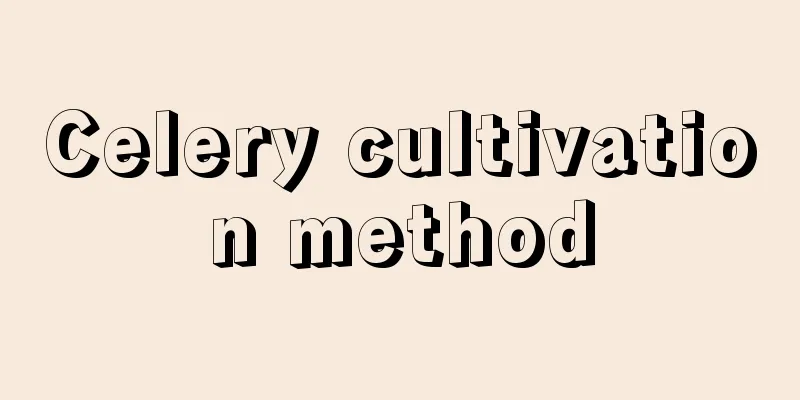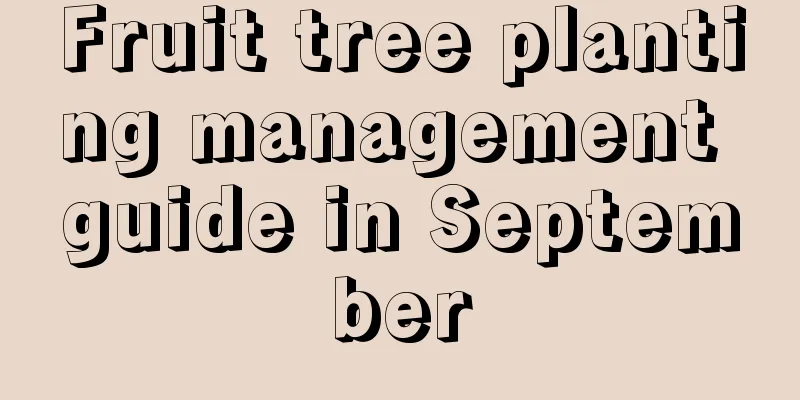Celery cultivation method

1. Maintenance methods1. Temperature: The most suitable temperature for celery growth is between 15 and 25 degrees. Likewise, breeding can be kept within this range. If it is below fifteen degrees, germination will be delayed, but if it is above thirty degrees, the seeds will basically not germinate. 2. Light: Celery is not particularly light-loving. Overall, it does not require much sunlight, but it cannot be completely without it. You can let it stay in a semi-shaded place with a little scattered light. Try to avoid too strong light, otherwise it will cause water shortage, and its leaves will wilt easily. 3. Watering: Celery likes a humid environment, especially when it is hot and dry. Pay special attention to replenishing water to avoid the overall wilting of the plant. But it cannot be too waterlogged, and drainage should be carried out regularly in specific seasons. 4. Fertilization: Celery has certain requirements for fertilizer. The first and most important point is base fertilizer. Sufficient base fertilizer needs to be mixed into the soil. Top dressing can also be carried out appropriately afterwards. 2. Breeding techniques1. Reproduction: Sowing method can be used. Since it is difficult for it to germinate, it is best to choose a suitable location for sowing. Seven or eight days before sowing, the seeds need to be soaked to make it easier for them to germinate. Specifically, the "wet sowing" method is used, which means that the seeds need to be watered thoroughly before sowing. After sowing, cover evenly with a layer of soil, and then keep it moist, watering once in the morning and evening every one to two days. 2. Pruning: You will often encounter some dry and yellow leaves. You can observe them regularly and cut them off when you find them. Then when a disease occurs, cut off the infected area. 3. Problem diagnosis and treatment1. Disease: There is a common disease called "early drought disease", also known as "spot disease". Generally speaking, the condition is more serious when it is cold and damp. In addition to spraying pesticides as a prevention and control method, it is also necessary to control density, strengthen wastewater management, and select disease-resistant varieties. 2. Pests: Generally speaking, they are not very serious and can be controlled with targeted measures after they appear. IV. Other issues1. Toxicity: Celery is non-toxic and is a common vegetable. 2. Can it be grown at home? Yes, although it is not an ornamental plant, you can grow it at home and eat the vegetables you grow. |
<<: How to grow apple mint well
>>: Cultivation methods and precautions of closed sheath ginger
Recommend
How to grow water hyacinth
1. Breeding environment 1. Soil: When caring for ...
Cultivation method of spatholobus truncatus
Growth habits of Chrysanthemum truncatum The hang...
Geranium topping method
1. Time Selection For seedlings that have just st...
Is orchid a bluegrass? What is the difference?
1. Are they the same? Orchids are not orchid gras...
How to trim Margaret
Why prune? Because the marigold is perennial, its...
How to propagate glass jade
There are two ways to propagate glass jade: one i...
How to grow geranium
1. Moisture control When raising it, be sure not ...
6 secrets to growing vegetables without failure
How to choose seeds that are easy to grow? When p...
How to fertilize the palace lantern Kalanchoe
1. The plant's fertilizer requirements Genera...
How to water green radish in summer
1. Watering method in summer We all know that the...
Can firewood ash be used as fertilizer?
Firewood ash as fertilizer Firewood ash can be us...
Flower language of olive branch
1. What is the language of flowers? 1. Peace: The...
What should I do if the leaves of the money tree turn yellow?
As a common household ornamental plant, the money...
Can succulents be exposed to the sun?
1. Is it possible? Under normal circumstances, su...
Causes and treatments for yellow leaves of bamboo palm
Palm bamboo is one of the common ornamental plant...









